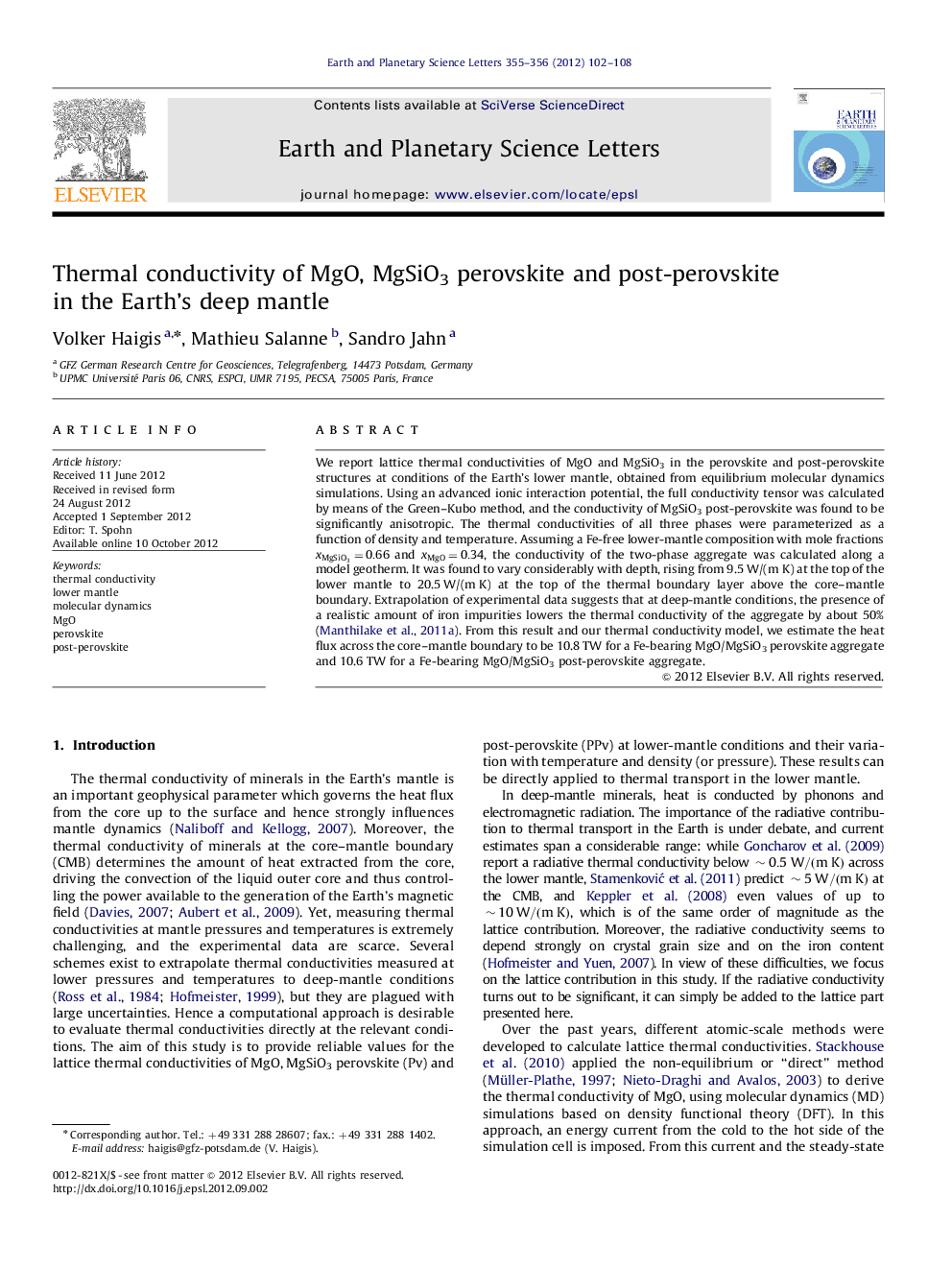| Article ID | Journal | Published Year | Pages | File Type |
|---|---|---|---|---|
| 4677362 | Earth and Planetary Science Letters | 2012 | 7 Pages |
We report lattice thermal conductivities of MgO and MgSiO3 in the perovskite and post-perovskite structures at conditions of the Earth's lower mantle, obtained from equilibrium molecular dynamics simulations. Using an advanced ionic interaction potential, the full conductivity tensor was calculated by means of the Green–Kubo method, and the conductivity of MgSiO3 post-perovskite was found to be significantly anisotropic. The thermal conductivities of all three phases were parameterized as a function of density and temperature. Assuming a Fe-free lower-mantle composition with mole fractions xMgSiO3=0.66xMgSiO3=0.66 and xMgO=0.34xMgO=0.34, the conductivity of the two-phase aggregate was calculated along a model geotherm. It was found to vary considerably with depth, rising from 9.5 W/(m K) at the top of the lower mantle to 20.5 W/(m K) at the top of the thermal boundary layer above the core–mantle boundary. Extrapolation of experimental data suggests that at deep-mantle conditions, the presence of a realistic amount of iron impurities lowers the thermal conductivity of the aggregate by about 50% (Manthilake et al., 2011a). From this result and our thermal conductivity model, we estimate the heat flux across the core–mantle boundary to be 10.8 TW for a Fe-bearing MgO/MgSiO3 perovskite aggregate and 10.6 TW for a Fe-bearing MgO/MgSiO3 post-perovskite aggregate.
► Thermal conductivity of MgO, MgSiO3 perovskite and post-perovskite at high P, T. ► Model for thermal conductivity of mantle rock and its variation with P, T. ► Prediction of considerably varying thermal conductivity along a model geotherm. ► Heat flux across core–mantle boundary estimated to be 11 TW.
